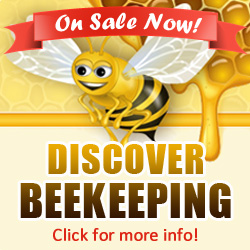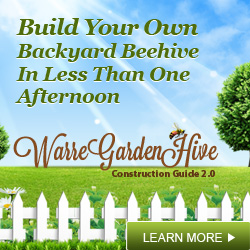Along with the new year comes new plans, big hopes, and lots of inspiring ideas. One idea that I hope will take hold in the backyards of people all over the world is a bee garden. Bee gardens are a wonderful way to give the bees in your area an extra source of food while providing plenty of enjoyment for yourself. They can be as simple or complex as you wish and size, color, or shapes are only limited by your imagination.
The first step to setting up your bee garden is choosing your flowers. Flowers that are native to your region are the best choices since they will withstand the climate, pests, and diseases in your area better, which would relieve you of many stressful hours of high maintenance care giving. Bees are attracted to some flowers more than others and you can find a list of these flowering plants by doing a simple Google search for “honeybee plants”. Also consider the blooming period of the flowers you choose. It would be best if you had something blooming during every month of the growing season. This way, the bees have a food source almost all year and your garden will always have flowers blooming for you.
The next thing you need to do is determine where your garden will be. You should look for a spot that won’t interrupt the foot traffic but isn’t so far out of the way that watering would be difficult. Somewhere that will provide the conditions (sun, shade, and soil type) that your flowers will need and somewhere that you can easily show off your handiwork would be a great spot.
One last thing you might want to consider before you begin planting is…the layout of your garden. This is where your imagination can really be helpful. Take note of the location and types of flowers that you have chosen then consider what size and shape would be best. Square, circle, oval, triangle, it’s up to you! (A bee-shaped one would look nice) If you have some kind of eye catching center piece, like a bird bath modified for bee use, then figure out where you want it first. Next, you should arrange what plants will go where. You can do this with sticks and string in the area that you will be working in or you can draw it on a piece of paper. Usually, you want to place taller plants behind your focal point, then medium height plants, then shorter plants, or ground covers. A focal point is pretty much just the center of the garden. You can draw attention to it with decorations or something but, it’s not necessary. Gardens in bloom are lovely all by themselves.
Last but not least, prepare the soil in your garden area and then plant your flowers!! Of course, you may have to wait ’til spring to plant some of them but there are some things you can begin to plant now, in certain zones. With proper care and plenty of pollination from the bees your garden will be very beeautiful, and the bees will enjoy it along with you!






Thanx for the advice on bee gardening. In fact, I had set-up one where one of my bee farms is, but unfortunately, I hadn’t prepared the soil well prior to planting, so I’m now being disturbed by weeds which compete with my flowering plants. They have almost out-competed them that their rate of growth has reduced so low. I decided to plant some ground grasses to cover the ground as a means of doing with the weeds, but they haven’t totally covered the whole garden ground. I’m also affected by wind effects as it causes hive falls often. I hope to find some solutions from You pliz. Thanx.
Hi Mwebe, have you tried strapping your hive together? You can use ratchet straps or whatever rope you have available, this helps keep the hive together and hopefully keep it from falling in high wind.